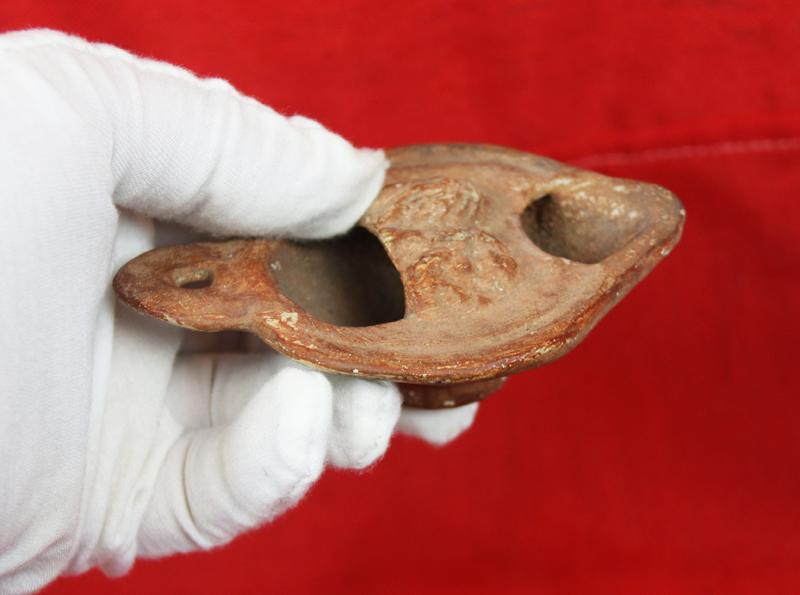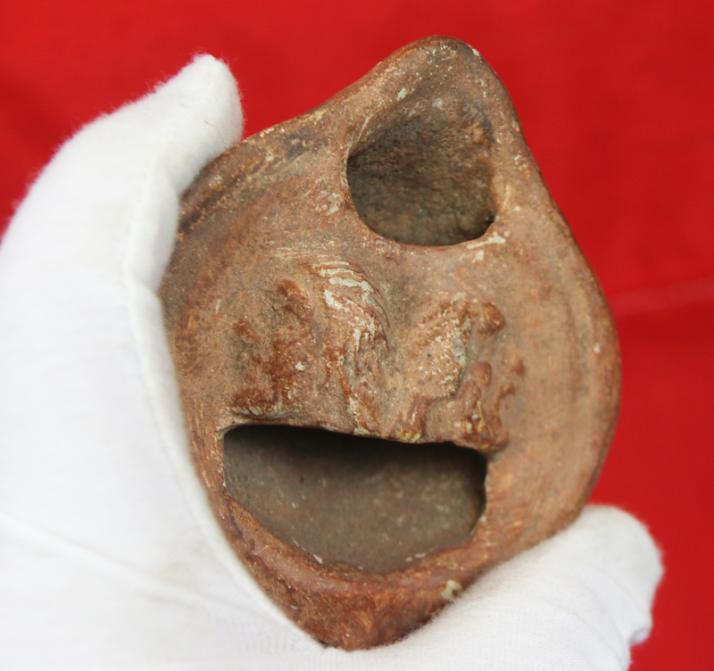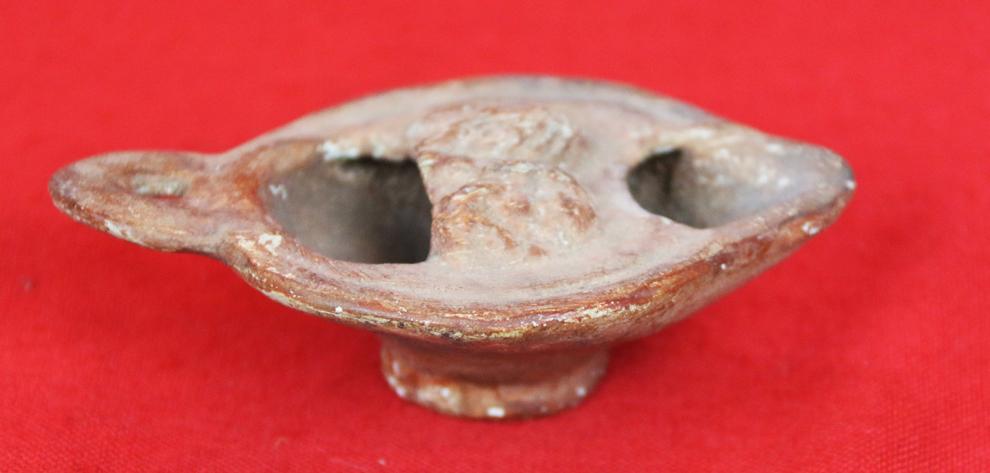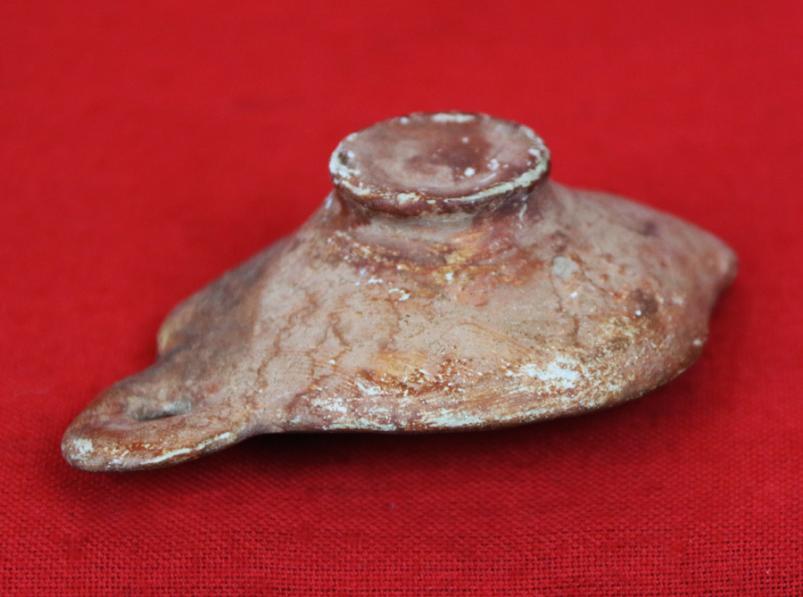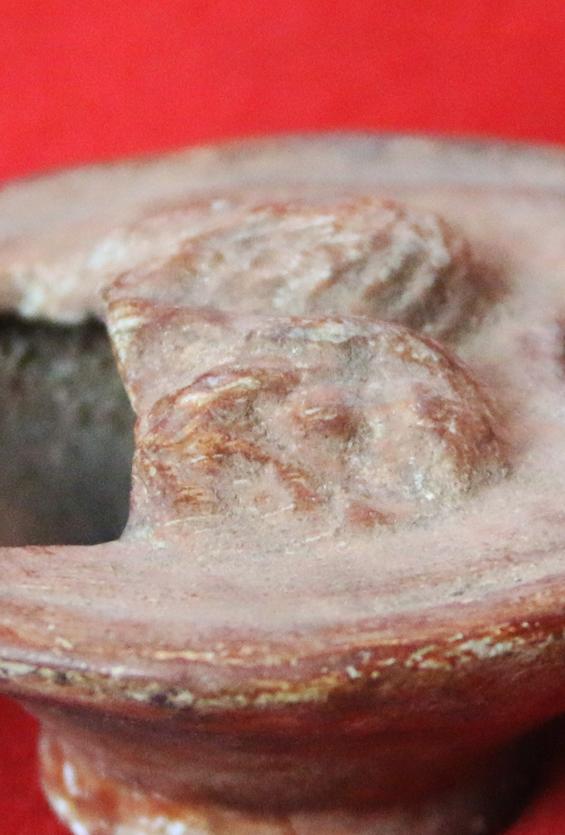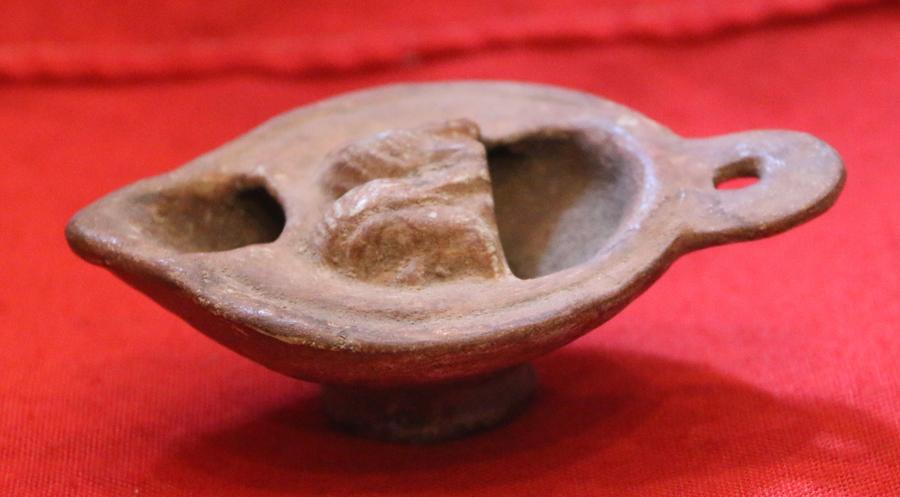A Beautiful, Impressed Twin Head Profile Roman Oil lamp 1st to 2nd Century, Imperial Roman Province Period. From the Time of Pontus Pilate & King Herod, to The Eruptions of Pompeii
Clay with impressed twin busts of bearded men back to back. Footed base. Oil lamps are ubiquitous at archaeological sites across the Mediterranean region. They were a crucial part of life in many cultures. Practically speaking, they were a source of portable artificial light, much like a candle or modern torch or flashlight. They were also important in sacred settings. They were frequently used in ceremonies, given as votive offerings, or placed in burial chambers. Age of the Roman Emperors
Augustus’ rule restored morale in Rome after a century of discord and corruption and ushered in the famous pax Romana–two full centuries of peace and prosperity. He instituted various social reforms, won numerous military victories and allowed Roman literature, art, architecture and religion to flourish. Augustus ruled for 56 years, supported by his great army and by a growing cult of devotion to the emperor. When he died, the Senate elevated Augustus to the status of a god, beginning a long-running tradition of deification for popular emperors.
Augustus’ dynasty included the unpopular Tiberius (14-37 A.D.), the bloodthirsty and unstable Caligula (37-41) and Claudius (41-54), who was best remembered for his army’s conquest of Britain. The line ended with Nero (54-68), whose excesses drained the Roman treasury and led to his downfall and eventual suicide. Four emperors took the throne in the tumultuous year after Nero’s death; the fourth, Vespasian (69-79), and his successors, Titus and Domitian, were known as the Flavians; they attempted to temper the excesses of the Roman court, restore Senate authority and promote public welfare. Titus (79-81) earned his people’s devotion with his handling of recovery efforts after the infamous eruption of Vesuvius, which destroyed the towns of Herculaneum and Pompeii.
Richard Lassels, an expatriate Roman Catholic priest, first used the phrase “Grand Tour” in his 1670 book Voyage to Italy, published posthumously in Paris in 1670. In its introduction, Lassels listed four areas in which travel furnished "an accomplished, consummate traveler" with opportunities to experience first hand the intellectual, the social, the ethical, and the political life of the Continent.
The English gentry of the 17th century believed that what a person knew came from the physical stimuli to which he or she has been exposed. Thus, being on-site and seeing famous works of art and history was an all important part of the Grand Tour. So most Grand Tourists spent the majority of their time visiting museums and historic sites.
Once young men began embarking on these journeys, additional guidebooks and tour guides began to appear to meet the needs of the 20-something male and female travelers and their tutors traveling a standard European itinerary. They carried letters of reference and introduction with them as they departed from southern England, enabling them to access money and invitations along the way.
With nearly unlimited funds, aristocratic connections and months or years to roam, these wealthy young tourists commissioned paintings, perfected their language skills and mingled with the upper crust of the Continent.
The wealthy believed the primary value of the Grand Tour lay in the exposure both to classical antiquity and the Renaissance, and to the aristocratic and fashionably polite society of the European continent. In addition, it provided the only opportunity to view specific works of art, and possibly the only chance to hear certain music. A Grand Tour could last from several months to several years. The youthful Grand Tourists usually traveled in the company of a Cicerone, a knowledgeable guide or tutor.
The ‘Grand Tour’ era of classical acquisitions from history existed up to around the 1850’s, and extended around the whole of Europe, Egypt, the Ottoman Empire, and the Holy Land.
Code: 23747
475.00 GBP

